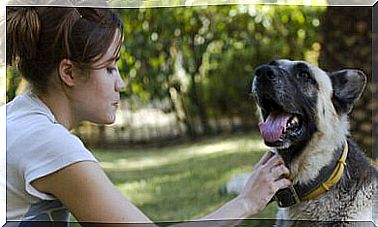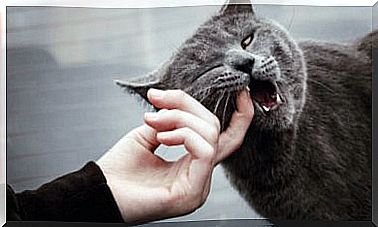Know The Effect Of Ice On Dogs
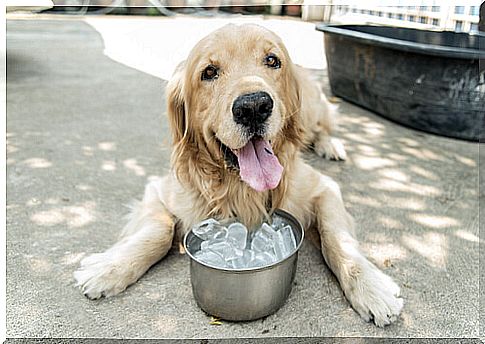
Year after year, in times of suffocating heat, we tend to offer our dog something refreshing, such as ice water or pieces of ice. But it’s sure? Is the effect of ice on dogs known? Keep reading because in this article we will analyze it.
The myth about the deadly effect of ice on dogs
There is a widespread belief that ingesting ice or ice water is dangerous for dogs. Supposedly it can cause stomach bloating that can lead them to develop acute gastric dilatation-volvulus syndrome, a life-threatening condition.
What is acute gastric dilation-volvulus syndrome?
Acute gastric dilation-volvulus (GVD) is a serious condition, with mortality rates ranging from 10% to 60%. Gastric dilation-volvulus occurs as a result of the accumulation of gas, fluid, or a combination of both in the stomach.
Thus, the stomach is distended with gas or liquid, and rotation occurs along the axis of the esophagus and the cardia. Factors associated with the onset of this syndrome include aerophagia, exercise immediately after eating a meal, and overeating.
What breeds are susceptible to this syndrome?
Animals most commonly affected by DVG include deep-chested large or giant breed dogs. This description encompasses the Great Dane, German Shepherd, Standard Poodle, and large mixed breed dogs.
Early diagnosis, medical stabilization, surgical intervention, and postoperative monitoring are important factors in reducing the mortality rate.
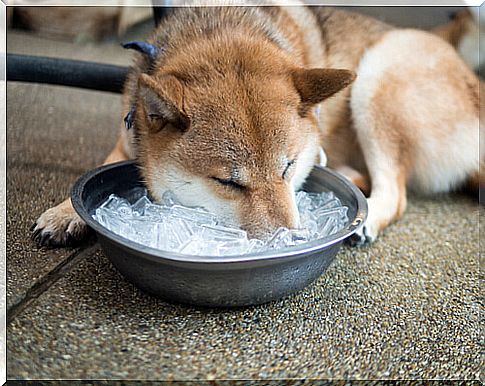
Can the ingestion of ice induce this syndrome?
There is no evidence that the ingestion of ice has to do with the development of DVG. The real danger to your dog comes from the animal consuming too much water or doing it too fast having swallowed a good amount of air on the way.
Despite the lack of danger from DVG, veterinarians do not recommend giving a dog too much ice water after an intense play session. Think about it, if you are hot and you have a glass of ice water and you drink it quickly, what happens?
What should satisfy leads to pain and discomfort. It may not be harmful, but why would you do this to your dog?
In these circumstances, when they are hot and thirsty, they are likely to drink a lot of water very quickly. Drinking a lot of water very quickly is a known risk factor for stomach bloating.
To prevent your dog from bloating, feed him several small meals a day instead of one or two large ones. Don’t let her drink a lot of water at one time and avoid exercising for at least an hour after eating.
Is there a dental effect of ice in dogs?
Yes, ice cubes are actually a common cause of tooth breakage in dogs. It is known that the bigger and harder the cube, the greater the chances of this happening.
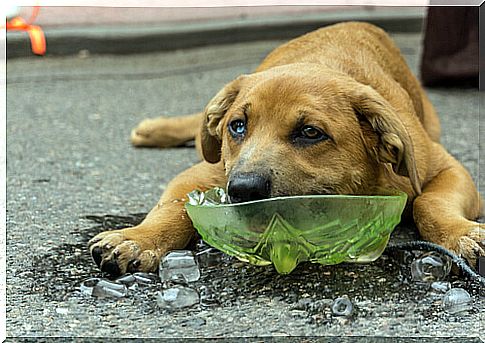
Chewing anything hard frequently can cause significant wear on tooth enamel. One option is to offer smaller chips or cubes to help avoid these problems.
Can ice ingestion in dogs lead to drowning?
Choking on a large ice cube is possible if the dog cannot chew on it. Again, offering small pieces of ice or ice chips is a better option to avoid this risk.
On the other hand, animals that have lost teeth or have advanced dental disease have a lower ability to chew and a higher risk of drowning. Similarly, dogs with breathing difficulties or neurological disorders may be at increased risk of choking on an ice cube.
In case of heat stroke, can ice be used on dogs?
In an overheating situation, experts advise against the use of ice. The indication for these cases is to offer cold water, but not ice. The dog must cool down gradually to avoid sudden vasoconstriction.
In heatstroke, it is important to promptly promote the cooling process. It is recommended to wet the dog with water at room temperature – with emphasis on the belly and back – except for the head area. Then you have to go quickly to the veterinary consultation.
Even if you manage to control a heat stroke in your dog at home, it is a good idea to go to the vet to make sure that your dog has not suffered internal damage. It is important to recognize the signs of heat stroke: red gums, vomiting, loud panting, staggering, confusion, shortness of breath, hot skin, and thick saliva.





